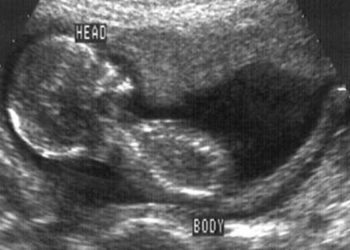Elective egg freezing a cost-effective strategy to delay child bearing
1. In women planning to delay childbearing until age 40, IVF with eggs frozen at age 35 was more cost-effective than fresh IVF at age 40, according to a data-based mathematical model.
2. Egg freezing remained cost-effective as long as eggs were frozen before age 38.
Evidence Rating Level: 2 (Good)
Study Rundown: Women are increasingly waiting longer to have children for both personal and professional reasons. Given the natural limitations of fertility, they are being forced to turn to assistive reproductive technologies (ART) to help them conceive. In vitro fertilization (IVF) can only help so much, and the age of a woman’s eggs are the primary limiting factor. The live birth rate per IVF cycle decreases by nearly 50 percent for women over 40. Egg freezing, also known as oocyte cryopreservation, can address this problem by freezing a woman’s eggs when she is younger, allowing for better success rates down the line. But given the technology is still rather new—the experimental label was only lifted in 2012—a number of questions still remain, including weather it is a cost-effective strategy. In this study, researchers created a mathematical model to determine whether egg freezing at age 35, with the intention to attempt pregnancy at age 40, was more cost-effective than attempting pregnancy at age 40 with conventional IVF.
In women planning to delay childbearing until age 40, oocyte cryopreservation at age 35 reduced cost per live birth by an average of $15,114 and increased the likelihood of a live birth from 42 to 62 percent. Oocyte cryopreservation remained cost-effective as long as eggs were frozen before age 38. Strengths of this study included the use of data from national and clinic-specific databases as well as the incorporation of six months of attempted spontaneous conception prior to the use of ART, which is more consistent with current practice guidelines. A model is only as good as the data it’s based on—since elective oocyte cryopreservation is still a relatively new procedure, there wasn’t enough outcome data from frozen egg cycles to build the model. Instead, researchers used success rates from age-matched fresh IVF cycles, which have been shown to be similar in many studies, but are still a limitation of this model. In future studies, when data from IVF cycles after cryopreservation are more robust, models should be recreated to more accurately assess the cost-effectiveness.
Click to read the study in Fertility and Sterility
Relevant Reading: Cost-effective analysis of oocyte cryopreservation: stunning similarities but differences remain
In-Depth [mathematical model]: Using a combination of data from national databases, published literature and center-specific outcomes data, researchers constructed a decision-tree mathematical model of women choosing to defer childbearing until age 40. The model compared cost-effectiveness of three treatment options—(1) oocyte cryopreservation at age 35 and IVF with thawed eggs at age 40; (2) oocyte cryopreservation at 35 with two fresh IVF cycles at age 40 followed by two cycles with thawed eggs if necessary; or (3) two cycles of fresh IVF at age 40. All options included a six-month attempt at spontaneous conception at age 40 prior to IVF. Sensitivity analyses using various cost, age, and outcome inputs were also conducted.
According to model outputs, egg freezing (strategy 1) was the most cost-effective, resulting in a mean cost per live birth of $39,946 and a 62% success rate, compared to $55,060 for strategy 3, with only a 42% success rate. Strategy 2 resulted in the highest success rate—a 74% likelihood of live birth—but at a significant cost of $61,887 per live birth. In sensitivity analyses, oocyte cryopreservation remained cost-effective as long as eggs were frozen before age 38.
Image: PD
©2015 2 Minute Medicine, Inc. All rights reserved. No works may be reproduced without expressed written consent from 2 Minute Medicine, Inc. Inquire about licensing here. No article should be construed as medical advice and is not intended as such by the authors or by 2 Minute Medicine, Inc.







